Abstract
In reviewing the growth of infants who live under favourable conditions and are fed according to WHO feeding recommendations, the Working Group found significant differences between the growth patterns of these infants and the patterns reflected in the NCHS-WHO international reference. Given the short- and long-term consequences of growth failure, and the dangers of both the premature introduction of complementary foods and their undue delay--described as the "weanling's dilemma", the Working Group concluded that use of the current NCHS-WHO reference appears to accentuate the difficulty of avoiding these extremes rather than to help ensure optimal infant nutritional management. The Working Group identified the following requirements: (a) a new reference which will enhance the nutritional management of infants; (b) the reference population should reflect current health recommendations because of the frequent use of such reference data as standards; (c) evaluation, in a broad range of settings, of the practical utility of using reference data based on infants for whom the WHO feeding recommendations are being followed; (d) close investigation of the effects of different complementary foods on the growth of infants who are being fed according to the WHO recommendations; (e) criteria for evaluating abnormal growth patterns; (f) research for identifying proxy measures for length; and (g) evaluation of reference data based on other anthropometric measurements, such as skinfold thickness and arm and head circumferences.
Full text
PDF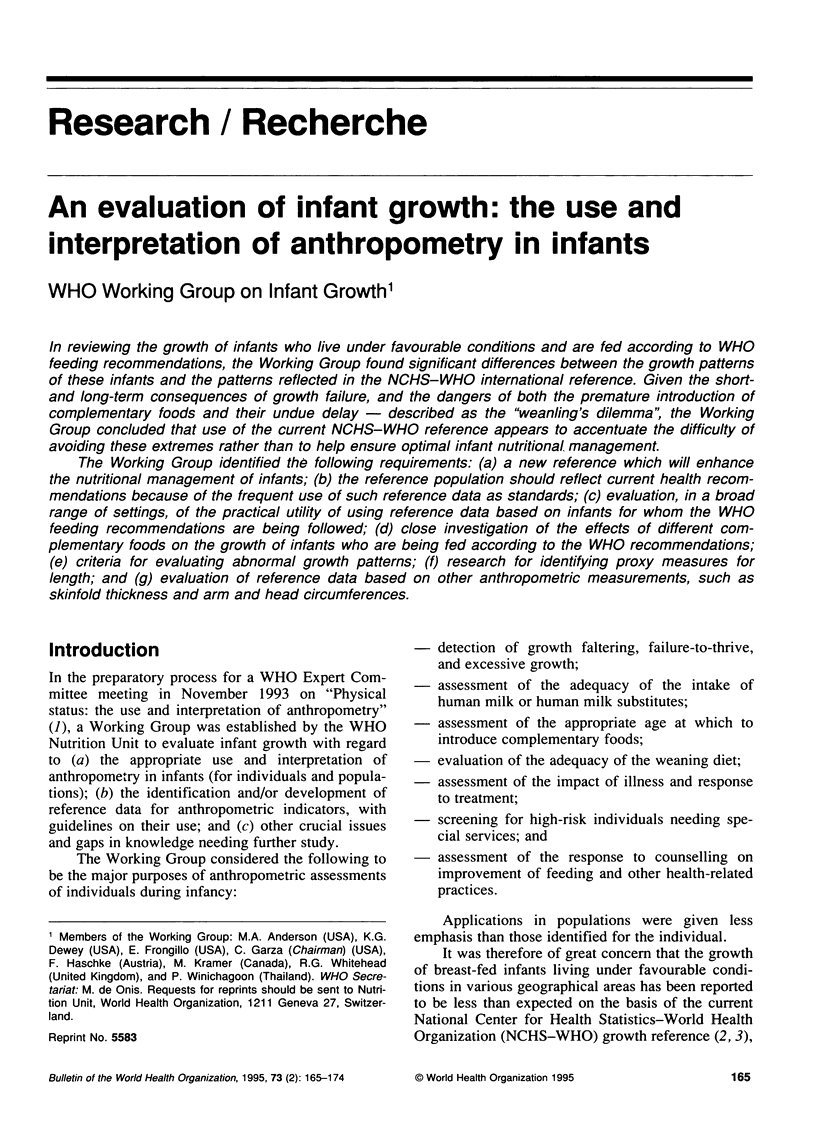
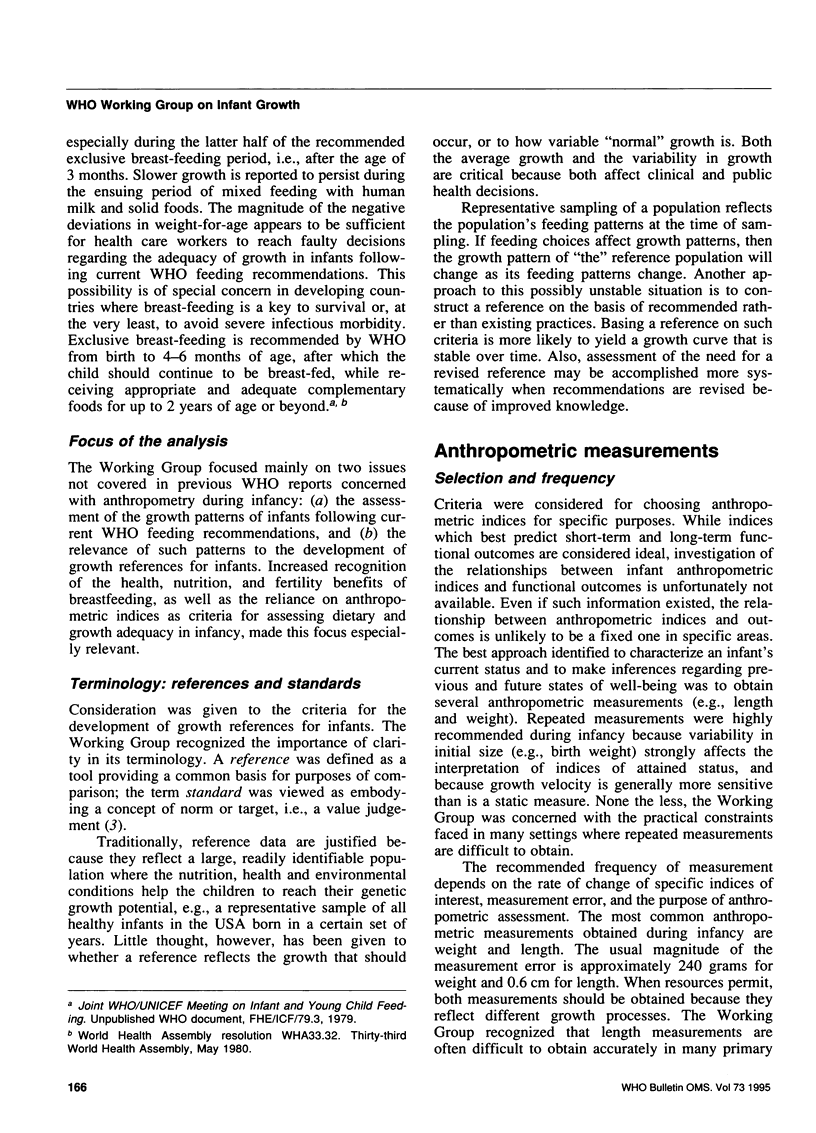
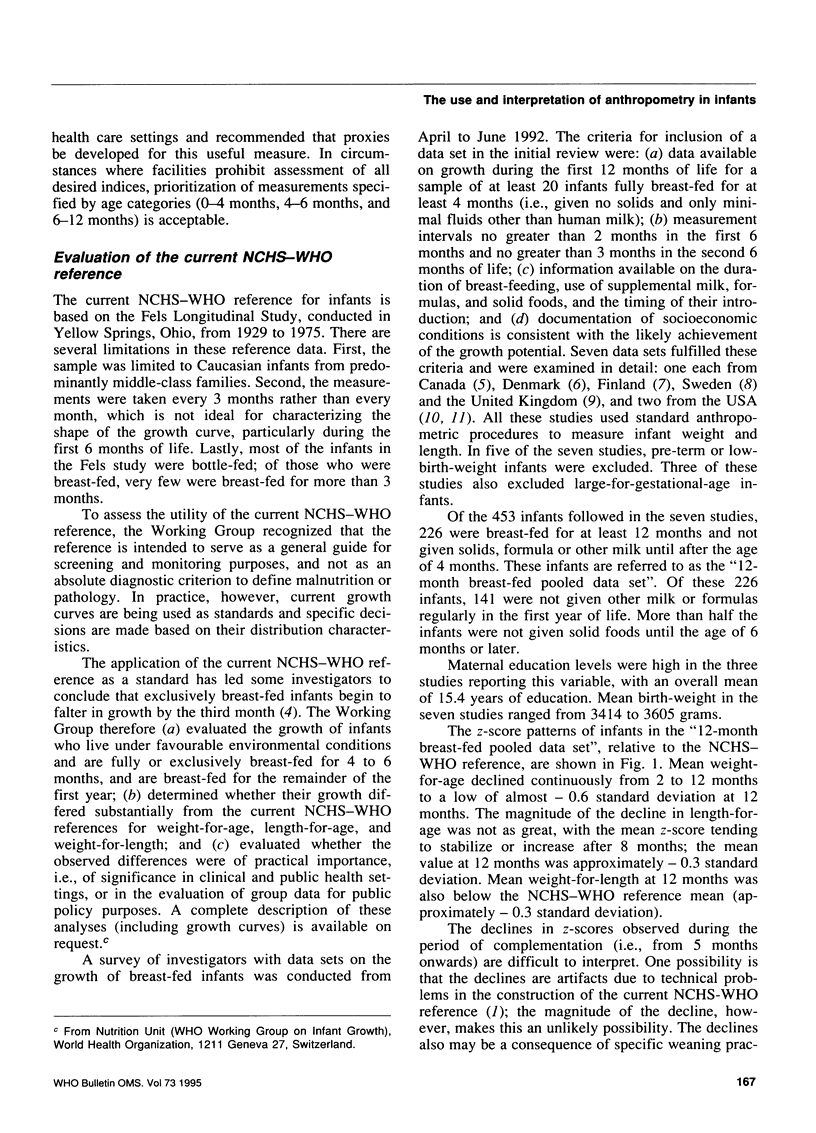
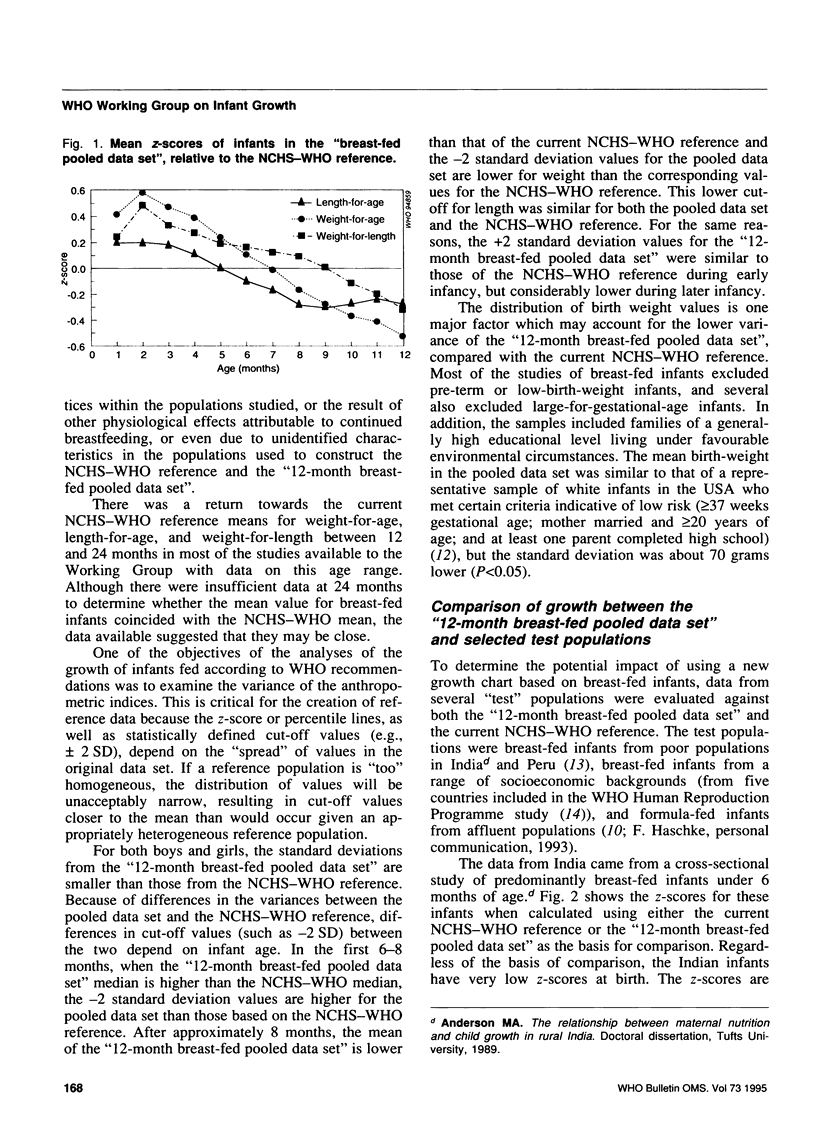
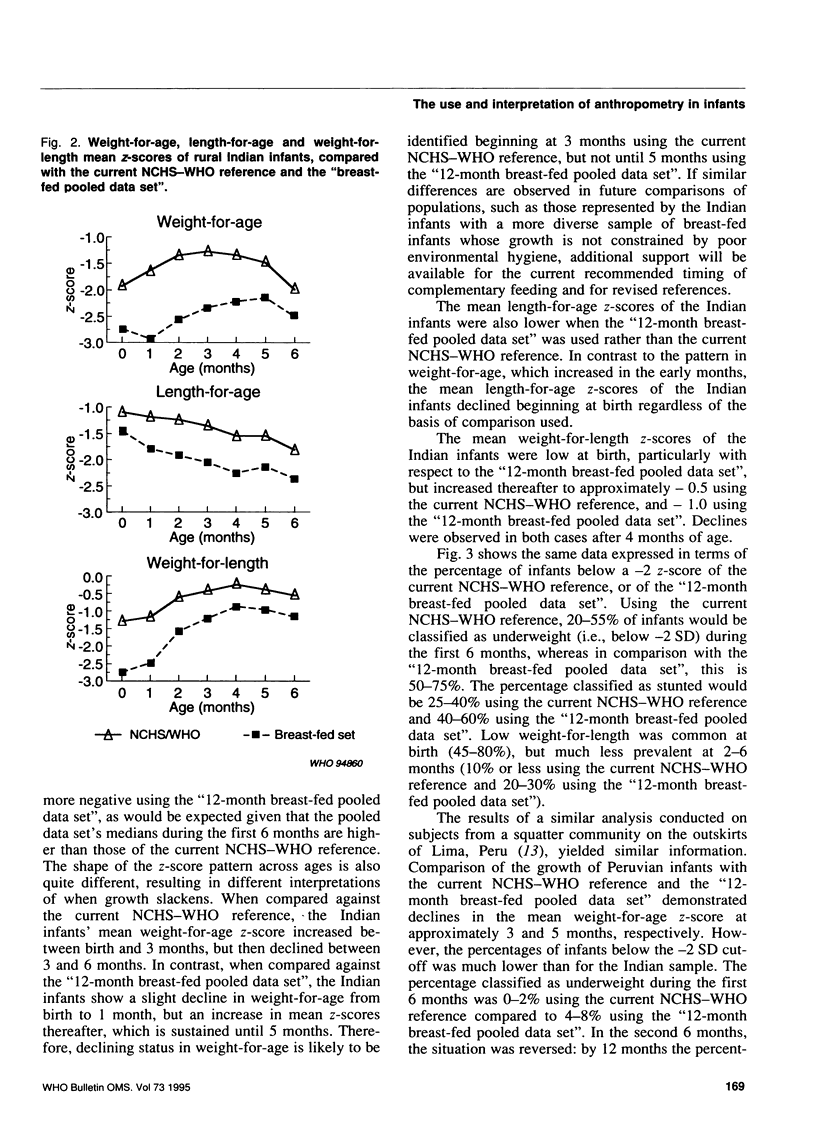
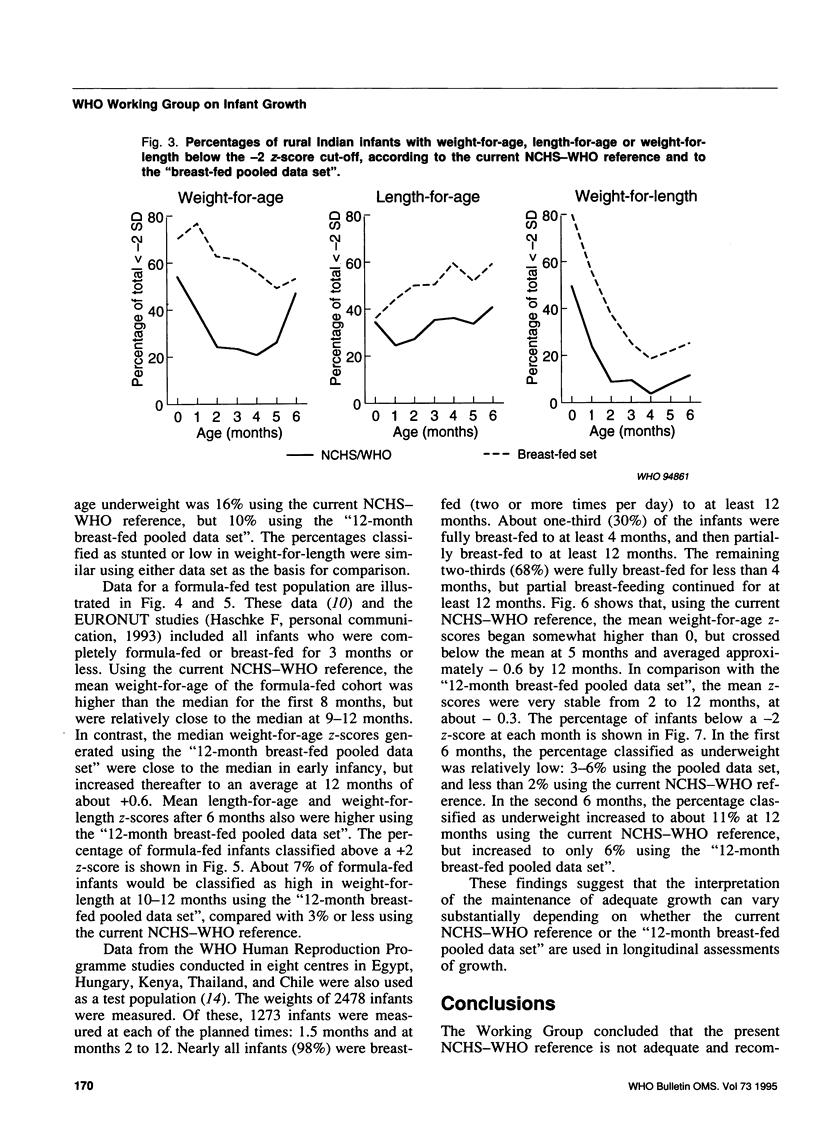
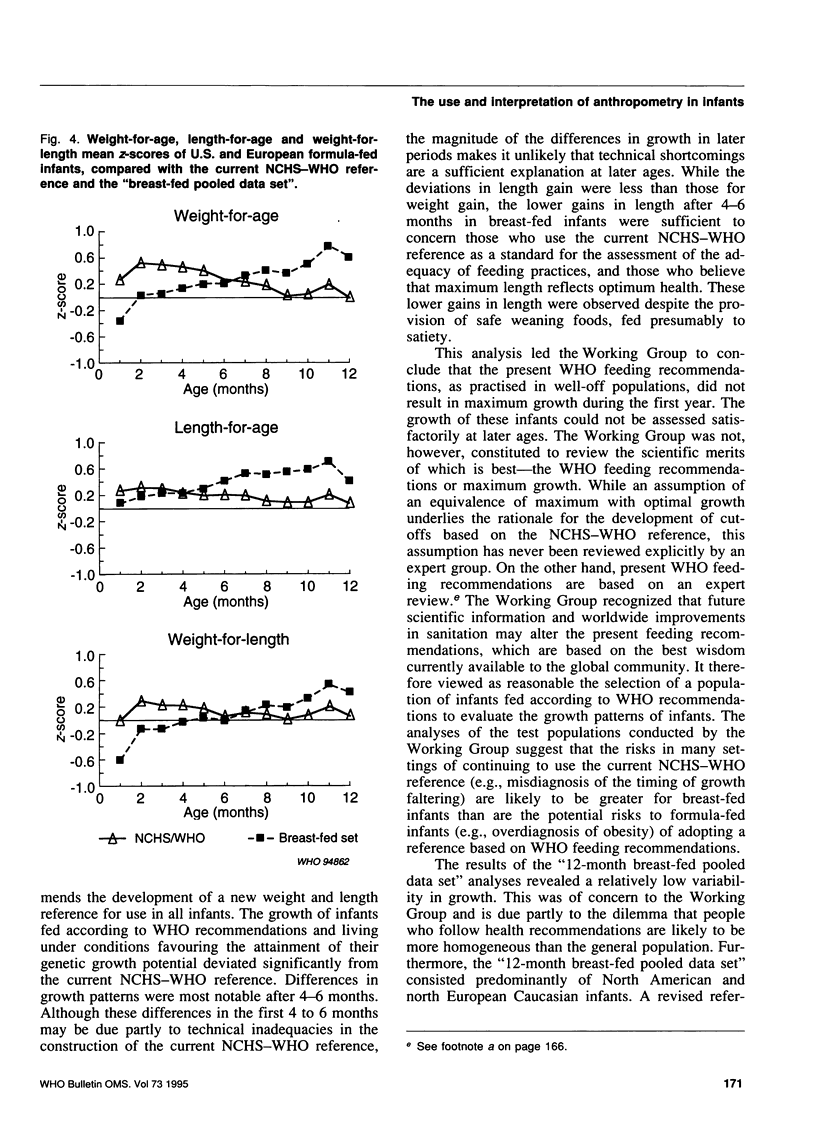
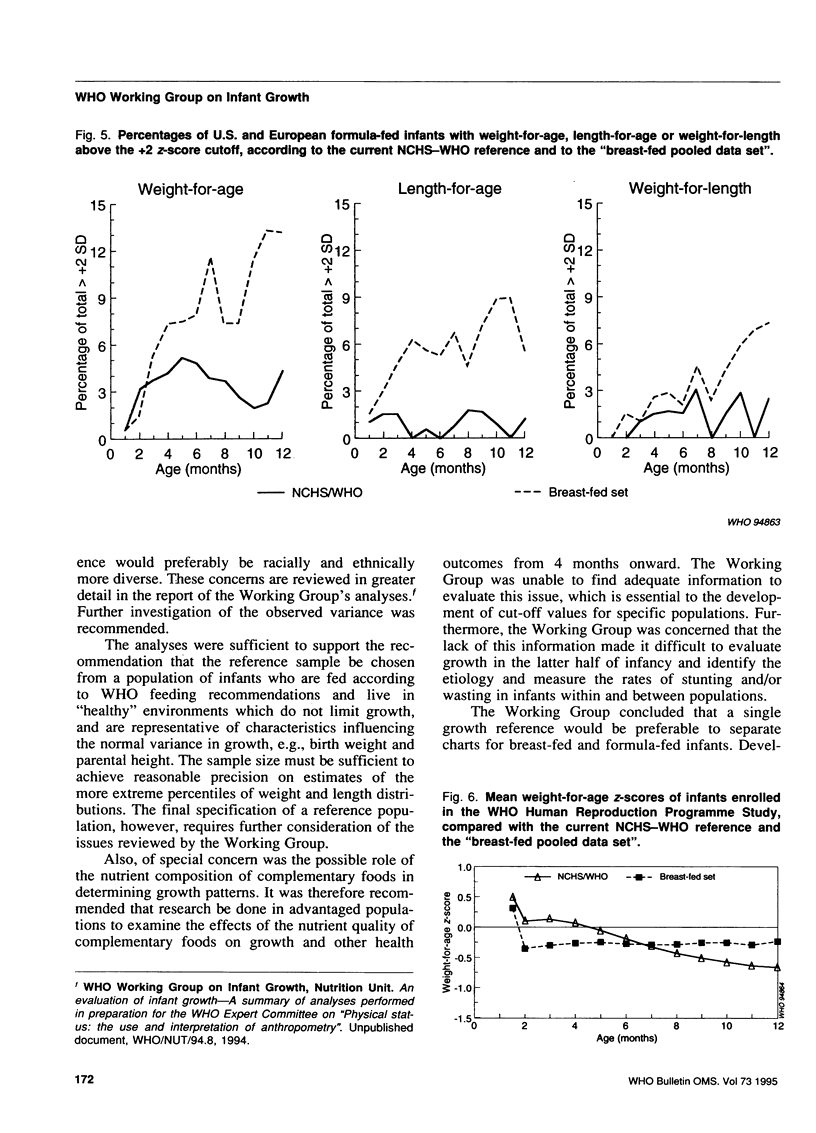
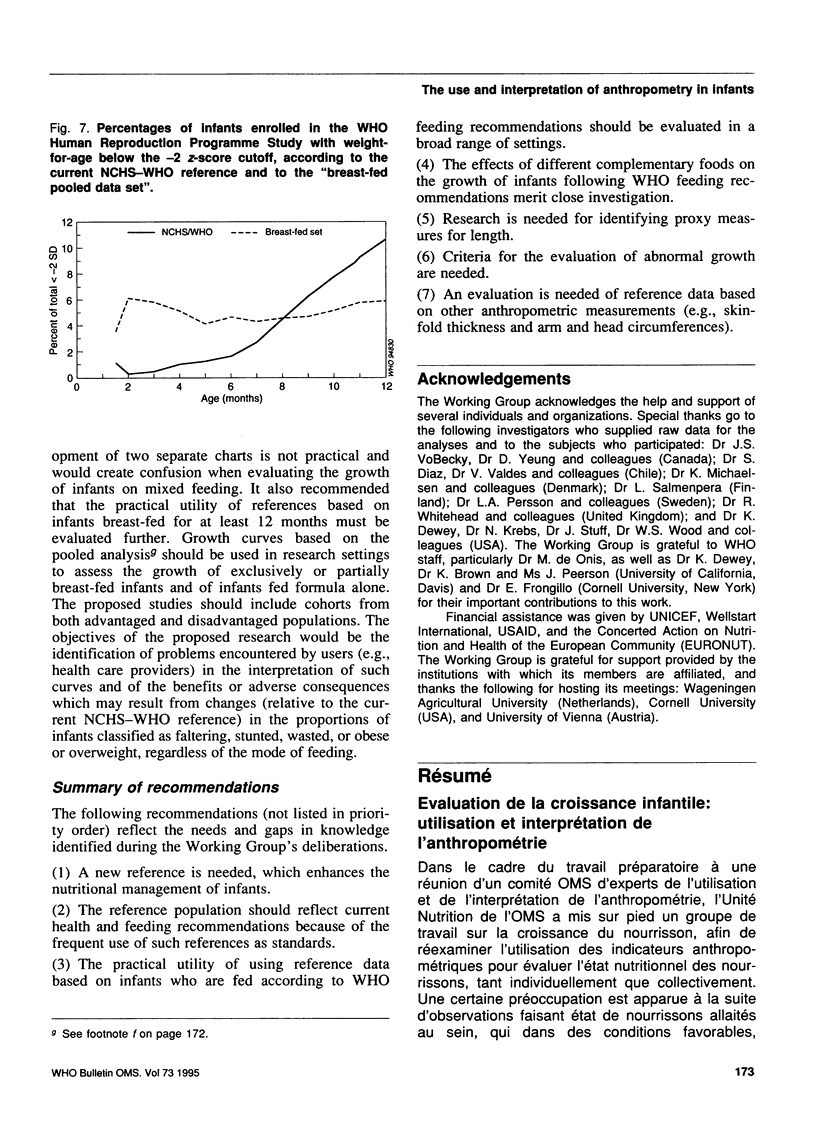
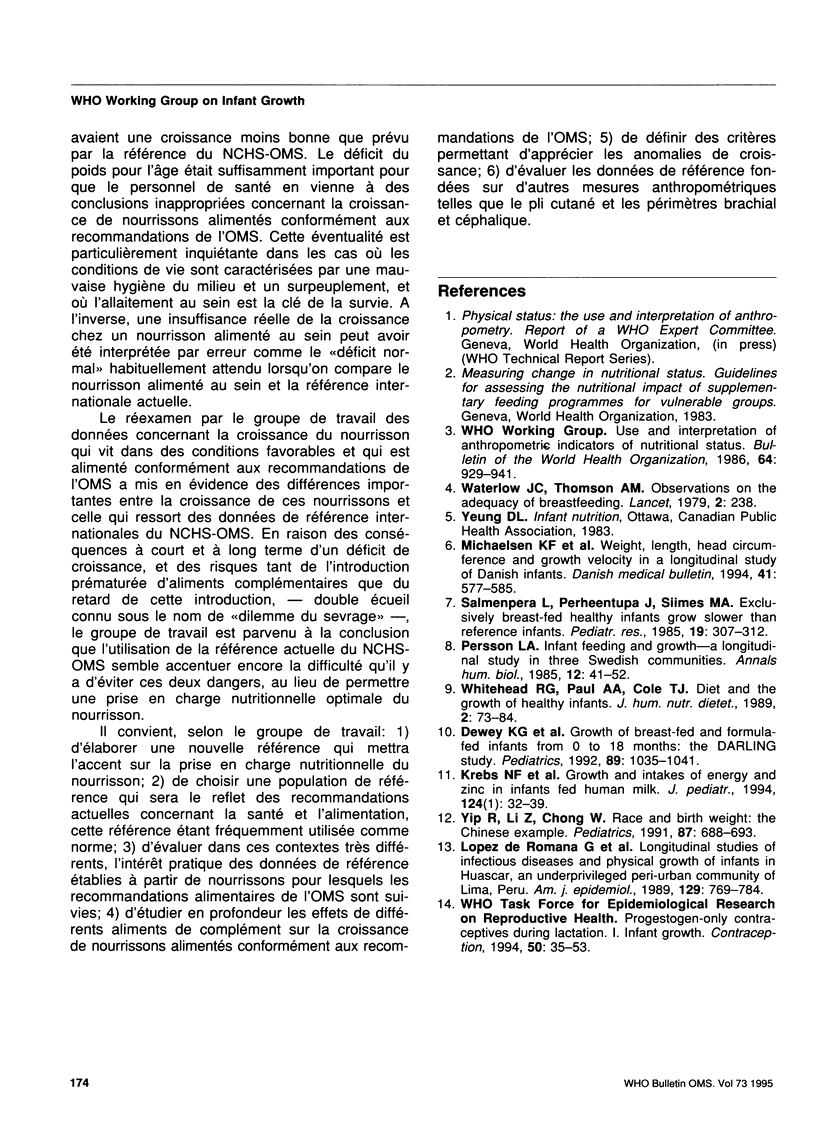
Selected References
These references are in PubMed. This may not be the complete list of references from this article.
- Dewey K. G., Heinig M. J., Nommsen L. A., Peerson J. M., Lönnerdal B. Growth of breast-fed and formula-fed infants from 0 to 18 months: the DARLING Study. Pediatrics. 1992 Jun;89(6 Pt 1):1035–1041. [PubMed] [Google Scholar]
- Krebs N. F., Reidinger C. J., Robertson A. D., Hambidge K. M. Growth and intakes of energy and zinc in infants fed human milk. J Pediatr. 1994 Jan;124(1):32–39. doi: 10.1016/s0022-3476(94)70251-9. [DOI] [PubMed] [Google Scholar]
- Lopez de Romaña G., Brown K. H., Black R. E., Kanashiro H. C. Longitudinal studies of infectious diseases and physical growth of infants in Huascar, an underprivileged peri-urban community in Lima, Peru. Am J Epidemiol. 1989 Apr;129(4):769–784. doi: 10.1093/oxfordjournals.aje.a115192. [DOI] [PubMed] [Google Scholar]
- Michaelsen K. F., Petersen S., Greisen G., Thomsen B. L. Weight, length, head circumference, and growth velocity in a longitudinal study of Danish infants. Dan Med Bull. 1994 Nov;41(5):577–585. [PubMed] [Google Scholar]
- Persson L. A. Infant feeding and growth--a longitudinal study in three Swedish communities. Ann Hum Biol. 1985 Jan-Feb;12(1):41–52. doi: 10.1080/03014468500007551. [DOI] [PubMed] [Google Scholar]
- Salmenperä L., Perheentupa J., Siimes M. A. Exclusively breast-fed healthy infants grow slower than reference infants. Pediatr Res. 1985 Mar;19(3):307–312. doi: 10.1203/00006450-198503000-00011. [DOI] [PubMed] [Google Scholar]
- Waterlow J. C., Thomson A. M. Observations on the adequacy of breast-feeding. Lancet. 1979 Aug 4;2(8136):238–242. doi: 10.1016/s0140-6736(79)90248-4. [DOI] [PubMed] [Google Scholar]
- Yip R., Li Z., Chong W. H. Race and birth weight: the Chinese example. Pediatrics. 1991 May;87(5):688–693. [PubMed] [Google Scholar]


